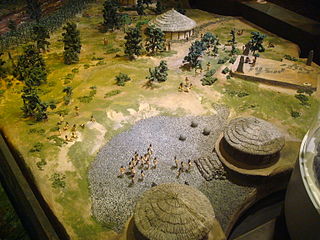
The first indigenous peoples of Costa Rica were hunters and gatherers, and when the Spanish conquerors arrived, Costa Rica was divided in two distinct cultural areas due to its geographical location in the Intermediate Area, between Mesoamerican and the Andean cultures, with influences of both cultures.

William Walker was an American physician, lawyer, journalist, and mercenary. In the era of the expansion of the United States, driven by the doctrine of "manifest destiny", Walker organized unauthorized military expeditions into Mexico and Central America with the intention of establishing colonies. Such an enterprise was known at the time as "filibustering".

Juan Rafael Mora Porras was President of Costa Rica from 1849 to 1859.

Juan Santamaría Rodríguez was a drummer in the Costa Rican army, officially recognized as the national hero of his country for his actions in the 1856 Second Battle of Rivas, in the Filibuster War. He died in the battle carrying a torch he used to light the enemy stronghold on fire, securing a victory for Costa Rica against American mercenary William Walker and his forces. Thirty five years after his death, he began to be idolized and was used as a propaganda tool to inspire Costa Rican nationalism. A national holiday in Costa Rica, Juan Santamaría Day, is held annually on April 11 to commemorate his death.

Patricio Rivas was a wealthy liberal Nicaraguan lawyer and politician, member of the Democratic Party, who served as Acting Supreme Director of Nicaragua from June 30, 1839 to July 27, 1839 and from September 21, 1840 to March 4, 1841. Later he served as a president of one of the several competing governments of Nicaragua from October 30, 1855 to June 24, 1857. However, he was merely a puppet president; rule was held by William Walker.

José María Estrada Reyes was the President of Nicaragua after Fruto Chamorro’s death during the Filibuster War, serving from 12 March to 23 October 1855.

In the 19th century, Nicaragua was beset by political problems, allowing William Walker, an American Southerner seeking to establish English-speaking slavery states in Latin America, to ascend to the Nicaraguan presidency.

The Second Battle of Rivas occurred on 11 April 1856 between Costa Rican militia under General Juan Rafael Mora Porras and the Nicaraguan forces of American mercenary William Walker. The lesser known First Battle of Rivas took place on the 29 June 1855 between Walker's forces and the forces of the Chamorro government of Nicaragua.

Florencio Xatruch was a general who led the Honduran expeditionary force against William Walker in Nicaragua in 1856.

La Cruz is a canton in the Guanacaste province of Costa Rica. The head city is in La Cruz district.
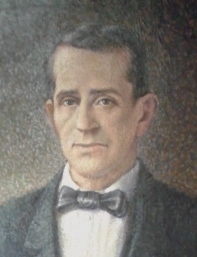
José María Cañas Escamilla was a Salvadoran military figure. He was born in Suchitoto, El Salvador.
The First Battle of Rivas occurred on June 29, 1855, as part of the struggle to resist William Walker, an American filibuster, adventurer and mercenary who arrived in Nicaragua with a small army of mercenaries in June 1855 in support of the Liberal democratic government of General Francisco Castellón in the Nicaraguan civil war. His army, with local support, was able to defeat the Legitimist party (Aristocratic) and conclude the Nicaraguan civil war.

Máximo Jerez Tellería was a 19th-century Nicaraguan politician, lawyer and military leader. He is considered to be one of the greatest Liberal political thinkers in Nicaraguan history. He was a leader of the movement towards Central American unity.
Florentino Alfaro Zamora was a Costa Rican politician.
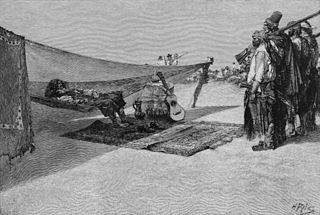
Between 1665 and 1857, Caribbean pirates and filibusters operated in Lake Nicaragua and the surrounding shores. The Spanish city of Granada, located on the lake, was an important trading centre for much of its early history so it was a prime target for pirates such as Welshman Henry Morgan and freebooters like William Walker.
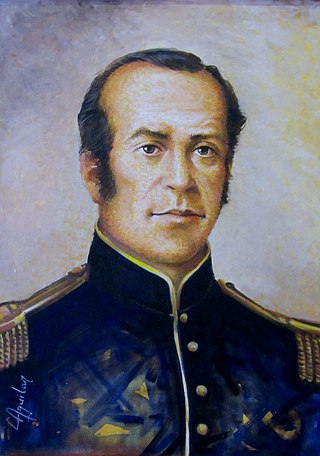
Ramón Belloso (1810–1858) was a Salvadoran military man born in San Salvador who helped expel the filibuster William Walker from Nicaragua.

The Battle of La Virgen occurred on 3 September 1855, at La Virgen, Nicaragua. It was part of the Legitimist efforts to resist the newly arrived force of William Walker, who had the support of the fierce opponents of the Legitimists, the Democrats. After a hard-fought but one-sided skirmish, Walker's forces emerged victorious, giving the cause of the invading Filibuster army legitimacy, and inspiring many new volunteers to join his force.
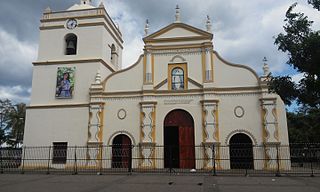
The Battle of Masaya took place in the small town of Masaya, northwest of William Walker’s filibuster capital, Granada. It was part of Walker’s efforts to dislodge the resurgent Allied Central American Army from its fortifications in Masaya, which lay within a day’s march of his capital. After significant initial filibuster advances were made, Walker’s army was forced to retreat towards Granada after receiving notice that the city was under attack.

The action of 23 November 1856 was a minor naval engagement during the Filibuster War between the Nicaraguan (Filibusters) schooner Granada and the Costa Rican brig Once de Abril, which took place off San Juan del Sur, Nicaragua.
This is a list of participants in the Walker affair, an occupation of Nicaragua by American mercenary William Walker and his followers and supporters. It includes those who joined him in Nicaragua and those who supported the campaign from the United States.
























